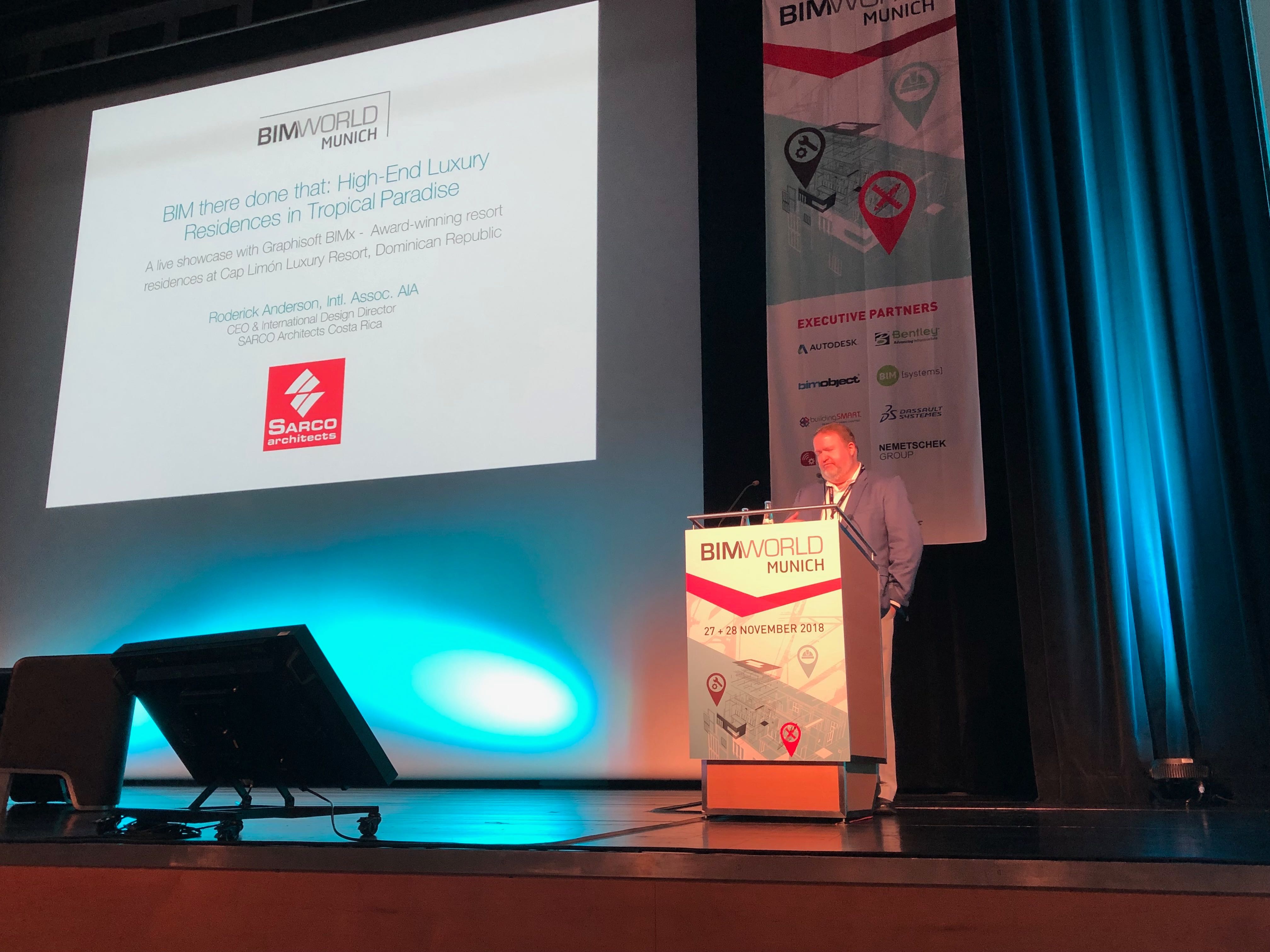I titled my presentation at the BIM World Munich conference “BIM, There, Done That: High end luxury residences in tropical paradise.” Rather than share the typical facts and figures, I shared a live walkthrough using the BIM model of a resort we designed in the Dominican Republic. The 300 people in that auditorium — architects, designers, software providers — sat on the edge of their seats. Many of us were surprised that only a quarter of architecture firms around the world have adopted Building Information Technology (BIM) and Virtual Reality (VR). I’m honored that, as the only architect there from Central America, I could open more eyes to the power of this technology. As I expressed during my presentation, technology is wonderful and we should embrace it. However, a talented young architect gains very little by using BIM if he has not built something from the ground up. The solution is for young architects and more experienced architects, many of whom attended the conference, to work together.When I interview new hires, I ask: “Where do you see yourself in three years?” Often they reply that they want to have worked in two or three firms. Yet an architect, especially a new one, will gain the most experience by working at a single firm for several years because a project can last three years from conception to permits to the building. Until you actually complete the construction, you cannot say you’ve been able to close your first cycle of one project. Along the way, Building Information Modeling and Virtual Reality are tools we can use to better communicate with each other, and with our clients. At the conference, an architect came up to me and said, “Wow, I would have never thought of it like that.”

The real understanding we need to come to is that BIM is more than just a program, it’s a shift in mindset — a philosophy to design and build in a more integrated way. Without it, many professionals put things on paper and in the back of their minds, they think they’ll finish solving issues on the construction site. For me, that’s irresponsible. By using the technology we have available, I solve everything before it gets built.
To realize this vision of solving problems early on, we got a chance to explore many side applications of BIM. It’s incredibly multi-dimensional. The client, along with the whole team, can walk, visualize, and understand the space early on. Anything that helps the clients see the project through the architect’s eyes is tremendous. Many applications involve coordination and communication between engineers and other tradesmen. Some of these more technical applications are more for the professionals. For example, there is one that enables us to identify a design issue, such as an air duct going right through a structural beam. The team then can communicate and manage hundreds of issues.
Building Information Modeling is the future, but the reality is we are not there as an industry. A transcendent game changer, it requires a substantial change in how we work. So at large firms, I imagine the inertia of all of those people. When 50+ professionals come to the realization that they have to learn a brand new way from scratch, it can be hard to move forward … but also an exciting investment in the future of your firm and your clients.
How each professional uses the technology depends on the type of projects and the type of focus. Some architects focus on the construction’s efficiency of hours, others on reducing waste by 5% using BIM. My high-end residential clients are looking for perfection, not cutting hours.

My international clients arrive in Costa Rica at first believing they need to hire an architect from the U.S. and find someone else local to translate the design. But I am an exception to the rule. With 15 years of experience using BIM and implementing it into the construction process, I exceed my clients’ standards because we use the technology to help them visualize and communicate effectively. We can communicate overseas throughout the design phase and provide a view of their tropical residence before the construction even starts. Our projects then come in on budget and on time, and the client feels at peace in their new tropical paradise.
Because I have embraced this technology for so long, I have a close relationship with ArchiCAD, which is owned by Graphisoft. I’ve presented on BIM at conferences in Mexico, Chile, Brazil, and most recently in Munich. It was my first time in Munich, and I felt very much at home. Perhaps due to my German and Swedish roots, I felt comforted by the clean lines in the architecture — reminiscent of how I work and live my life. The people I met were all so attentive, complimentary, and hospitable. My hosts from the Graphisoft Germany headquarters felt that my concise presentation resonated, as it was very visual and easy to understand — the reason why more of us the industry should embrace the technology. I’m grateful to have been a part of the conference. In the coming years, I hope to see at least 70% of firms using BIM to help professionals and our clients see the future.


